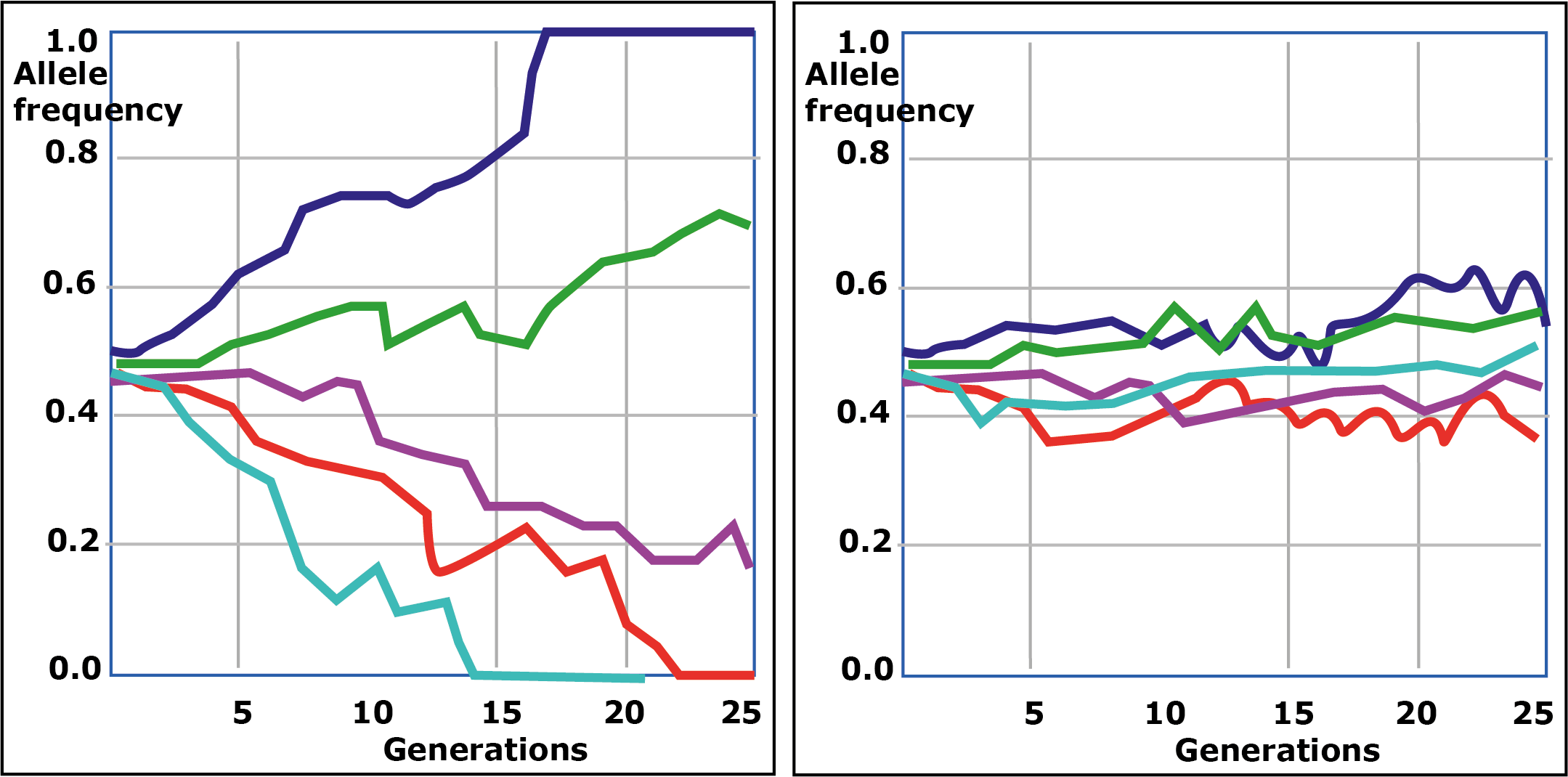Genetics 3D
Agents of Evolution
Evolution occurs whenever gene frequencies in a population change in time. Individuals do not evolve, but populations do. In addition to natural selection, there are several other agents of evolution, including gene flow, genetic drift, and mutation.
Gene Pool
A bee species is an example of a gene pool. It contains all the genes and allelic variations some of which might be expressed and some not. The bigger the gene pool the more fit is the species to adapt and survive when subjected to environmental pressures such as climate change or disease.
The question might be asked therefore how does a gene pool evolve, what factors affect the gene pool?
Gene flow occurs when alleles are shared between populations. For example, a beekeeper might have a small popuation of bees in an apiary which is isolated. In time the bees become inbred because there is no influx of foreign drones to mate with the queens. The introduction of new queens will produce drones which bring in new alleles to the apiary and so improve the genetic diversity in the apiary.
Genetic drift occurs through a change in the allele frequency in a population. In a large population the frequency of any particular allele will stay almost unchanged because a large number of bees will carry the gene. However, in a small population the frequency of any gene can fluctulate greatly; just by chance a allele might be lost due say to disease. Thus any chance event which causes a change in the frequency of an allele is call genetic drift. This is illustrated in the charts below.
Gene Pool
A bee species is an example of a gene pool. It contains all the genes and allelic variations some of which might be expressed and some not. The bigger the gene pool the more fit is the species to adapt and survive when subjected to environmental pressures such as climate change or disease.
The question might be asked therefore how does a gene pool evolve, what factors affect the gene pool?
Gene flow occurs when alleles are shared between populations. For example, a beekeeper might have a small popuation of bees in an apiary which is isolated. In time the bees become inbred because there is no influx of foreign drones to mate with the queens. The introduction of new queens will produce drones which bring in new alleles to the apiary and so improve the genetic diversity in the apiary.
Genetic drift occurs through a change in the allele frequency in a population. In a large population the frequency of any particular allele will stay almost unchanged because a large number of bees will carry the gene. However, in a small population the frequency of any gene can fluctulate greatly; just by chance a allele might be lost due say to disease. Thus any chance event which causes a change in the frequency of an allele is call genetic drift. This is illustrated in the charts below.

On the left a situation is shown for a small popultion for clarity only 5 alleles are shown. There is great fluctuation in the frequency of these alleles over say 25 generations. Some alleles survive others are eliminated with time.
The chart on the right shows the situation for a large population. Here there is little variation in the gene frequency over the same time.
A population bottleneck is a type of genetic drift in which the size of the population of an organism severely decreases. This might be due to disease, predition or simply competition. If the organism dies it takes its genes with it. The organisms which survive now determine the allele pool; so some alleles increase in frequency simply because they are the only alleles left.
Another type of genetic drift is known as the founder effect. Here a new population is formed, or “founded”, in a new location by a very small number of individuals from a larger population. If this new population does not interact and reproduce with the main population, the allele frequences in this population will evolve to be much different from that of the parent population.
An island for example may ony contain a species that has found its way there through the migration of the small number of individuals. Once separated from the main population the new colony will experience a variation of the gene frequency to that of the parent colony over the next generations.
The chart on the right shows the situation for a large population. Here there is little variation in the gene frequency over the same time.
A population bottleneck is a type of genetic drift in which the size of the population of an organism severely decreases. This might be due to disease, predition or simply competition. If the organism dies it takes its genes with it. The organisms which survive now determine the allele pool; so some alleles increase in frequency simply because they are the only alleles left.
Another type of genetic drift is known as the founder effect. Here a new population is formed, or “founded”, in a new location by a very small number of individuals from a larger population. If this new population does not interact and reproduce with the main population, the allele frequences in this population will evolve to be much different from that of the parent population.
An island for example may ony contain a species that has found its way there through the migration of the small number of individuals. Once separated from the main population the new colony will experience a variation of the gene frequency to that of the parent colony over the next generations.